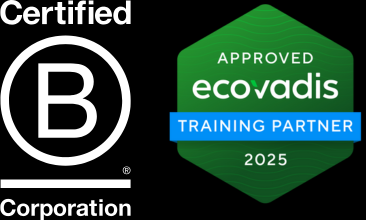The aim of this guide is to help small and medium-sized companies (SMEs) improve their corporate sustainability and responsibility in the environmental, social and governance (ESG) fields in practice. With the development of the ESG market, legislative updates and changes in the expectations of customers, partners and investors, the field of sustainability plays an increasingly important role in building a strong and competitive business.
After discussing ESG legislation, in the previous part of out ESG guide, in part 3, we’re getting into how to set up your ESG strategy, starting with stakeholder identification and engagement. We'll discuss who your stakeholders are, their importance, and ways to work together that benefit everyone.
Setting up your ESG strategy
Stakeholder identification and engagement
Stakeholders are people, communities or organisations who influence or are affected by your company. Stakeholder groups include “employees and other workers, suppliers, customers, end-users, local communities and persons in vulnerable situations, and public authorities, including regulators, supervisors and central banks” (ESRS 1).
The ESRS define two main types of stakeholder groups, and stakeholders can be part of both groups.
- Affected Stakeholders: This group consists of individuals or entities whose interests may be positively or negatively impacted by a company's operations and its direct and indirect business relationships throughout its value chain. This includes a wide range of parties whose welfare can be influenced by the company's activities. Nature is considered a “silent stakeholder.” Engagement with these stakeholders is vital to the company’s ongoing sustainability due diligence and materiality assessment process.
- Users of Sustainability Reporting: These stakeholders have a vested interest in the company's sustainability performance. This group is further divided into:
- Primary Users of General-Purpose Financial Reporting: These are existing and potential investors, lenders, and other creditors, including asset managers, credit institutions, and insurance companies.
- Other Users: This category encompasses the company's business partners, trade unions, civil society and non-governmental organisations, governments, analysts, and academics.
There are multiple methods of collecting stakeholder feedback, including
- Surveys
- Online discussion forums
- Working Groups
- Individual meetings
- Informal meetings
- Organisation of joint projects
- Telephone support
To gather stakeholder feedback, you can simply disclose information on your website or set up an email address to which anyone can submit a question or comment. You can choose different levels of cooperation – from mere provision of information to consultation and joint decision-making.
Managing collaboration with stakeholders leads to mutual understanding of both parties' interests and initiates a subsequent dialogue that results in shared satisfaction – a win-win situation.
Further guidance on engagement with affected stakeholders can be found in the OECD Due Diligence Guidance for Responsible Business Conduct.
Coming up in part 4, we'll focus on identifying your ESG material topics. This step will help you pinpoint the most important areas where your business can have a significant impact.

